Is Your ICU Utilization Rate Where It Needs to Be?

Why the Right Utilization Rate Matters and How to Get There with Tele-Critical Care
June 5, 2025
If there’s one metric that influences acute care quality outcomes, resource allocation and financial stability, it’s ICU utilization rate. Finding the right balance is not always straightforward, but sticking with an unreliable system will ultimately strain hospital operations.
So the question remains: is your ICU utilization rate where it needs to be? If not, what can be done about it? Let’s explore what ICU utilization rate is, why it matters and some strategic solutions you can implement.
Defining ICU Utilization
ICU utilization rate refers to how effectively ICU beds and materials are occupied over a certain period of time. A recent analysis by Critical Care Medicine suggests that an ideal ICU occupancy rate hovers between 70% and 85%, while falling outside of this range can create negative consequences.
Overutilizing (above 85%) can jeopardize the care of the more than 5 million patients admitted into U.S. ICUs every year, while underperforming (below 70%) can mean equipment, staff and spaces are not being utilized to their greatest potential; this is when we see burnt-out staff, which further reduces the quality of patient care.
Why ICU Utilization Rates Matter
A study from Respiratory Therapy predicts that the U.S. is facing critical hospital bed shortages by 2032. This conclusion was reached by analyzing and comparing pre-COVID-19 and post-COVID-19 hospital occupancy numbers. It was found that a national hospital occupancy of 75% is dangerously close to a bed shortage because it does not create a buffer capable of handling unexpected surges.
According to the Centers for Disease Control and Prevention (CDC), when national ICU occupancy reaches 75%, 12,000 excess deaths follow just two weeks later. It doesn’t stop there — if the U.S. were to surpass a national hospital occupancy of 85%, it is likely that tens of thousands of surplus American deaths would occur each year.
On top of bed shortages, hospitals across the country have been facing a never-ending battle with staff shortages. Rural hospitals have suffered a huge hit, and many hospitals’ night and weekend shifts have experienced significant staffing loss. Unbalanced staff-to-patient ratios are only one of several factors contributing to why U.S. intensivists experience the highest burnout rates at 25% to 71%. A map published in 2020 showed that more than 7,900 critical care physicians were leaving their profession and most U.S. states would need 50 to 300 extra physicians to meet the expected demand.
This national workforce crisis compromises care delivery, and hospitals risk being stretched too thin to fill in specialized roles.
Tele-ICU As a Strategic Solution
To meet these challenges, hospitals are leaning toward tele-critical care solutions like Intercept Telehealth, where our model doesn’t replace your team, but supports and enhances it.
Here’s how Intercept Telehealth helps hospitals bring their ICU utilization rates back to a stable range:
1. 24/7 Intensivist Care
We provide round-the-clock access to board-certified intensivists who can assist teams in neurology, stroke, sepsis and nursing, especially during peak hours. From identifying early warning signs to preventing unnecessary ICU admissions, our dedicated virtual teams ensure hospitals are always prepared.
2. Improving Leapfrog Scores
When ICU staff is stretched thin and providers are occupied elsewhere, having a tele-health team ensures infections and other dangers are caught right away. Staffing challenges can prevent hospitals from delivering impeccable care, but a virtual team can bridge this gap and boost a hospital’s Leapfrog score.
3. Flexible Models
We take the time to understand your hospital’s needs to create a custom virtual critical care solution. Our tele-ICU system is also fully integrated into a hospital in less than a month, resulting in a quick transition.
4. Bed Optimization
With our trained professionals, hospitals benefit from faster interventions to provide the best care, leading to the perfect balance for ICU utilization.
5. Improved Finances and Operations
The most common ICU machine is a mechanical ventilator, required by 20% to 40% of U.S. ICU admissions. Standard ventilators begin at $50,000, doubling their pre-pandemic cost. Overutilizing ICU resources like these results in significant costs which affect operational efficiencies. Our partners have reported $8 million saved from reduced ICU stays.
The Next Step Toward Better ICU Performances
If your utilization rate is not where it needs to be or you’re unsure how and where to begin, Intercept Telehealth is ready to help. Our results are not a temporary fix but meant for long-term success.
To learn more about supplementing your on-site team with Intercept Telehealth, reach out today. Find out how ICU challenges are increasingly being managed in modern hospitals.



